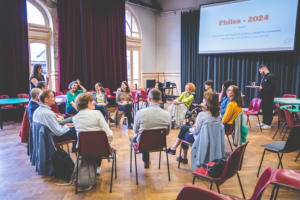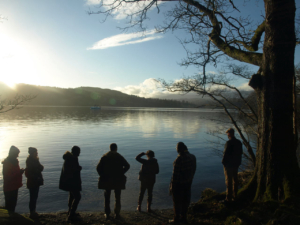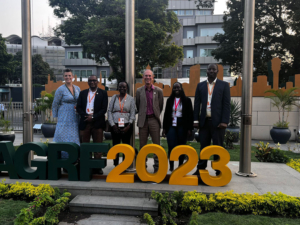Organisational silos are working (and they can work even better)
Organisational silos are working (and they can work even better)

Kate Simpson
Latest posts
Share:
Systems thinking shows us that ‘the system is working’. Silos in organisations are a case in point. The challenge with silos then is not to break them. Rather, we must ask how we better connect them.
Recently, whilst recruiting for a senior leader, I read a CV of a man who declared his leadership superpower was ‘breaking down silos’. But what if the silos are helping? What if we like silos? What if the silos don’t need breaking but nurturing?
In the world of organisations, it can seem that there is no crime more egregious than creating, working in, and let alone liking silos. And yet, in pretty much every organisation too big to fit around a kitchen table, there are sub-teams or silos. You too are probably part of one.
One of the universal truths of systems thinking is ‘if it exists it is working’. We keep on inventing silos in our organisations despite their lack of popularity. The question then is ‘for whom and in what way are silos working’?
Silos let us know who we belong to – who our people are – who does work like us – who understands the challenges we wrestle with – who knows the things that can help us. And silos create tight accountability.
Structurally, they allow organisations to chunk down accountability beyond the overall organisation performance. Silos mean we can see if the engineering department is developing products with suitable quality, we can see if the sales department is getting out into the market and generating interest, and we can measure if the customer service department is responding well to customers.
And in big organisations – be they public or private – silos help us to see and organise the parts or the organisation and not just the ‘whole’.
System thinking teaches us that resistance to change always sits in what is working and not in what isn’t working. And so, it is all this ‘useful stuff’ that makes silos so resilient to the best efforts of the most evangelical of mangers.
We have seen this in our work with the National Health Service in the UK. Again and again, we see how the silo between ‘hospital’ (clinical) care and social care (at-home nursing) can increase costs and impact negatively on patient health.
This is an organisation full of committed patient-centric people but the structures that define how funding flows and work is organised repeatedly lead to people being stuck in hospital for longer than they want and need, costing more money than they should and often getting less healthy.
In some organisations, the negative impact of silos goes beyond unintentional outcomes and silos become the borders around which an organisation wages civil warfare on itself. Silo leaders seek to capture resources, battle for talent, stake out their territory, and advocate for ‘their’ people. All this effort distracts from whatever the organisation exists to do and pulls at the very seams that hold it together.
So, if silos are both a good and useful thing as well as a bad and unhelpful thing, what do we do next? And how can systems thinking help us?
System thinking reminds us that our work is not to work primarily on the elements (bits) that make up a system, rather it is to work on the connections between them. So, in this case, we need to look not at how we break down or replace silos (matrix management anyone?) but at how we connect them better to each other. This is the power of networks.
Imagine you are part of a sports team. Perhaps you love to play football (or hockey, canoe polo, or kabaddi). That team you are part of is a silo – it connects a set of people in a discreet bounded way. But if you are part of, say, a football team, to really do the thing you exist to do, you need to play (work) with other teams. So, you join a league.
Now you need to connect with other teams, you need to share a calendar, you need to share resources, and have agreements about who plays who when and where, you need shared rules and norms and ways of collecting data.
You become part of a great team and a great league not because you win all the time but when the games you play are closely matched, when each team elevates the performance of the other, when the play itself is a joy to watch and be a part of. When this happens the league as a whole produces something that no team can produce on its own – great games of football/hockey/canoe polo/kabbadi.
In the organisational context, we don’t want competitions between our teams (silos) in the same way that sports teams do – but we do want them to connect closely, to bring out the very best in one another, to create between them something that no individual silo can do on its own.
We need our specialist teams to maintain their own sense of belonging, to know what they are accountable for, to invest in their distinct area of focus but to know that their ultimate success depends on their ability to connect with other silos. Creating this connected network is the work of the system leader.
So next time you find yourself bemoaning the silos within your organisation – ask yourself not what you can do to break them but rather what you can do to better connect them.
To learn more about how you can use an applied systems-based approach in your work, join the Systemcraft community and take the Systemcraft Essentials course.












